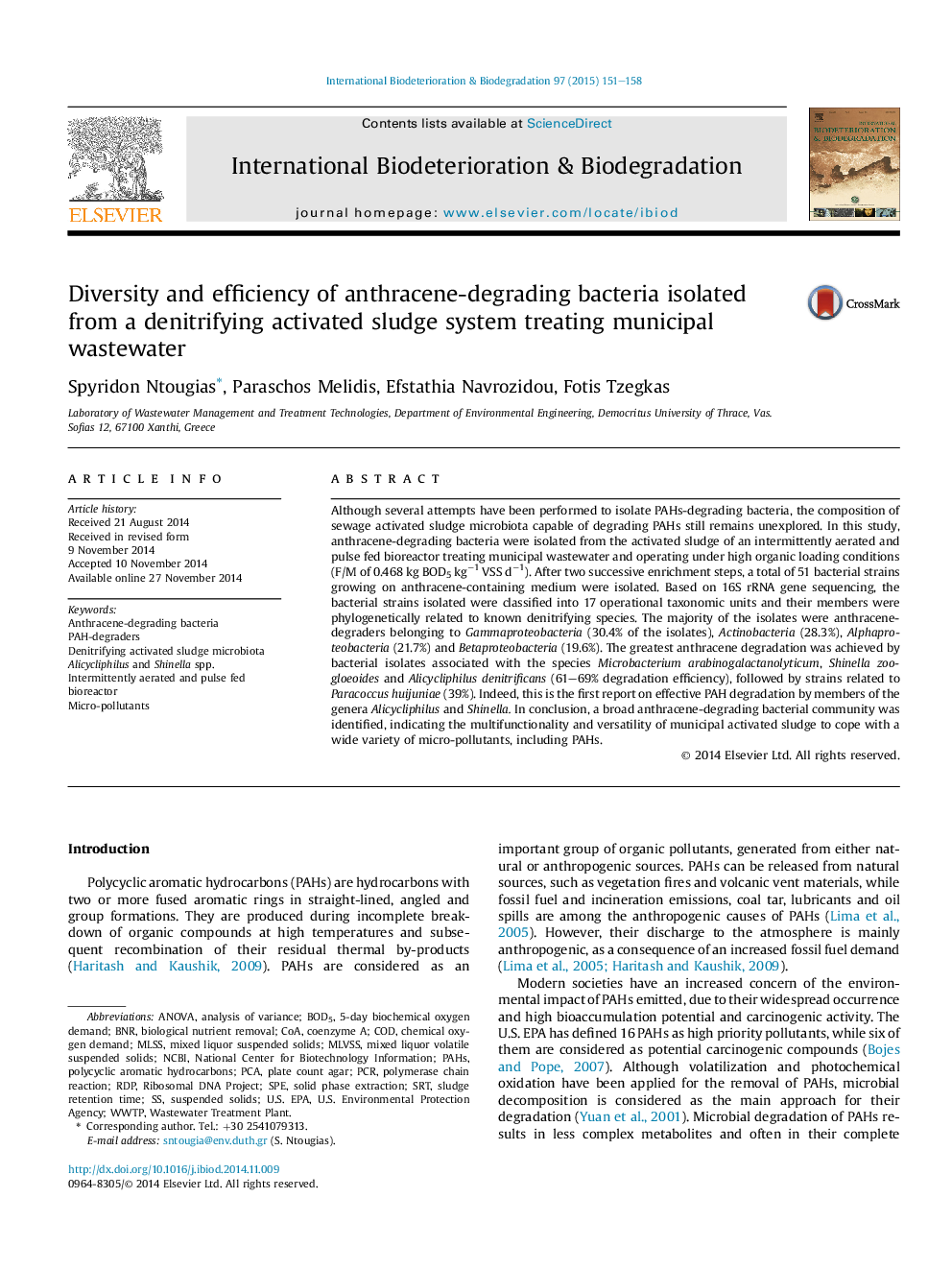| کد مقاله | کد نشریه | سال انتشار | مقاله انگلیسی | نسخه تمام متن |
|---|---|---|---|---|
| 4364679 | 1616320 | 2015 | 8 صفحه PDF | دانلود رایگان |
• Anthracene-degraders were examined for the first time in municipal activated sludge.
• Anthracene-growing bacteria were phylogenetically related to denitrifying species.
• A broad diversity of anthracene-degraders was identified in the activated sludge.
• Alicycliphilus, Microbacterium & Shinella spp. were effective anthracene-degraders.
• This is the first report on PAHs degradation by Alicycliphilus and Shinella strains.
Although several attempts have been performed to isolate PAHs-degrading bacteria, the composition of sewage activated sludge microbiota capable of degrading PAHs still remains unexplored. In this study, anthracene-degrading bacteria were isolated from the activated sludge of an intermittently aerated and pulse fed bioreactor treating municipal wastewater and operating under high organic loading conditions (F/M of 0.468 kg BOD5 kg−1 VSS d−1). After two successive enrichment steps, a total of 51 bacterial strains growing on anthracene-containing medium were isolated. Based on 16S rRNA gene sequencing, the bacterial strains isolated were classified into 17 operational taxonomic units and their members were phylogenetically related to known denitrifying species. The majority of the isolates were anthracene-degraders belonging to Gammaproteobacteria (30.4% of the isolates), Actinobacteria (28.3%), Alphaproteobacteria (21.7%) and Betaproteobacteria (19.6%). The greatest anthracene degradation was achieved by bacterial isolates associated with the species Microbacterium arabinogalactanolyticum, Shinella zoogloeoides and Alicycliphilus denitrificans (61–69% degradation efficiency), followed by strains related to Paracoccus huijuniae (39%). Indeed, this is the first report on effective PAH degradation by members of the genera Alicycliphilus and Shinella. In conclusion, a broad anthracene-degrading bacterial community was identified, indicating the multifunctionality and versatility of municipal activated sludge to cope with a wide variety of micro-pollutants, including PAHs.
Journal: International Biodeterioration & Biodegradation - Volume 97, January–February 2015, Pages 151–158
